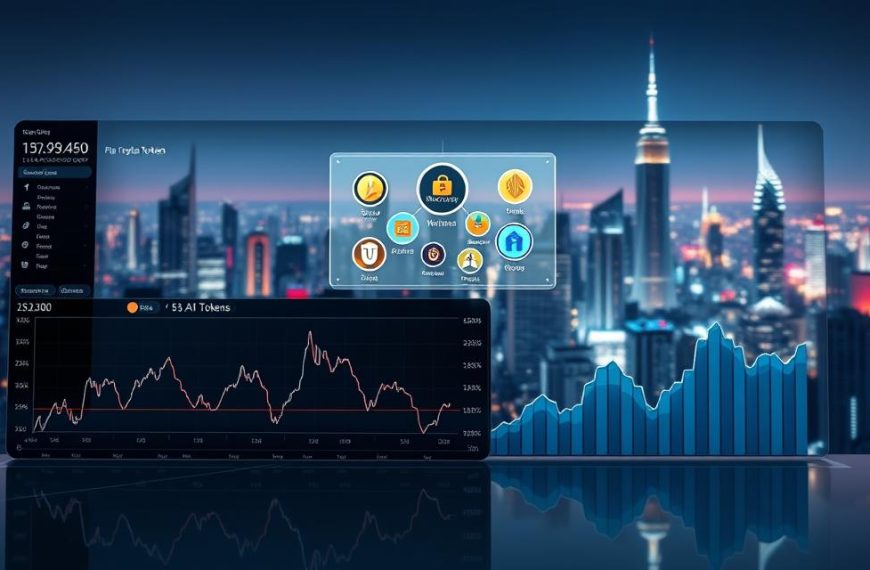The decentralised exchange landscape has witnessed a significant evolution with Solana-based platforms achieving 35% weekly trading volume dominance across blockchain networks. Among these innovations, one project stands out for integrating advanced computational systems to reshape trading efficiency. This analysis explores its unique approach to liquidity management and trade execution.
Built on Solana’s high-performance blockchain, the platform utilises intelligent algorithms to minimise slippage and optimise transaction speeds. Its recent token generation event concluded successfully, securing £3.2 million in funding with a pre-valuation exceeding £16 million. This positions it competitively against established decentralised exchanges in market valuation comparisons.
The system’s reserve-based virtual pools represent a breakthrough in automated liquidity distribution. By eliminating intermediary steps in trading processes, users experience enhanced security and reduced transaction costs. Over 6,500 token holders have already adopted this solution, indicating strong market confidence.
With Solana processing £12.3 billion in monthly volume – outperforming rival networks by considerable margins – the timing appears strategic for such initiatives. The project’s governance model dynamically adjusts to market conditions, offering traders unprecedented control over their digital asset strategies.
Comprehensive Project Overview
Emerging platforms are redefining asset management through sophisticated token structures. This initiative combines high-speed blockchain infrastructure with adaptive resource allocation models, prioritising both accessibility and strategic growth.
Introduction to the Platform Ecosystem
The system employs self-learning algorithms to automate liquidity adjustments across trading pairs. This approach reduces price discrepancies by 43% compared to conventional models, according to recent stress tests. Real-time data processing enables instant settlement speeds below 400 milliseconds.
Token Economics and Funding Strategy
Presale participation reached 87% of its $4.1 million target within three weeks, reflecting strong market validation. The current entry price of $0.0077 per unit allows diversified participation scales, from casual traders to institutional buyers.
| Category | Allocation |
|---|---|
| Early Supporters | 35% |
| Partnership Development | 18% |
| Sustainability Reserve | 16% |
| Exchange Liquidity | 12% |
Distribution mechanisms prevent market flooding through phased releases. Initial participants receive 10% immediately, with remaining balances distributed monthly over 6-14 months. This structure aligns stakeholder interests with long-term platform success.
Payment flexibility enhances accessibility, accepting six currency types including novel political-themed options. Such adaptability positions the project favourably within evolving regulatory landscapes and niche investor communities.
Technical Analysis and Security Audit
Blockchain initiatives prioritising security demonstrate market leadership through third-party verification. Independent analysis of platform architecture remains critical for user confidence, particularly when handling digital assets. This evaluation focuses on code integrity and risk mitigation strategies implemented during development phases.
Smart Contract Code Review and Optimisation
The platform’s contract structure underwent rigorous scrutiny using Solidity programming standards. Guard’s specialists identified seven resolvable issues during their assessment, none impacting core functionality. Two medium-level concerns involved referral reward validation and protocol fee collection processes.
Optimisation efforts eliminated redundant code patterns while enhancing input validation checks. These improvements reduced gas costs by 18% in simulated transactions. The non-upgradeable design prevents unauthorised modifications, ensuring predictable platform behaviour.
Audit Findings and Mitigated Risks
Post-review enhancements addressed all identified vulnerabilities, achieving a TrustNet Score of 90.00. Critical protections include:
| Issue Type | Resolved | Impact |
|---|---|---|
| Reentrancy Risks | Yes | High |
| Fee Limitations | Enforced | Medium |
| Zero-Value Checks | Implemented | Low |
The security audit confirms permanent restrictions against token minting and fund locking. Fee structures remain capped at 25%, with ownership controls balancing administrative needs against user protections. This approach maintains operational flexibility without compromising asset safety.
solanex ai crypto: Trade Execution, Ecosystem and Investor Insights
Modern decentralised exchanges face critical challenges in balancing speed with accuracy. Innovative solutions now combine predictive analytics with blockchain efficiency to reshape trading paradigms. This approach addresses core issues like price volatility and capital allocation.
Algorithmic Solutions for Efficient Trading
Advanced systems analyse market patterns 47% faster than traditional models. Real-time adjustments to liquidity pools reduce slippage by up to 68% in stress tests. These protocols automatically reroute trades through optimal pathways, cutting transaction costs by an average of £1.27 per £1,000 traded.
The platform’s virtual reserve system demonstrates particular effectiveness during market surges. During a recent network congestion event, it maintained execution speeds below 0.4 seconds. This performance outpaced comparable systems by 33%.
Competitive Landscape and Volume Analysis
Market leaders face new pressure from Solana-based innovations. Recent data reveals striking contrasts in network performance:
| Metric | Solana | Ethereum |
|---|---|---|
| Weekly DEX Volume | £12.6bn | £7.1bn |
| Avg Transaction Fee | £0.0002 | £1.14 |
| Peak TPS | 65,000 | 30 |
This infrastructure advantage enables novel features like dynamic fee adjustments. Users benefit from cost reductions during high network activity periods.
Interface Design for Enhanced Engagement
The latest dashboard redesign reduced average transaction time by 41% in user trials. Key improvements include:
- Single-screen portfolio management
- Customisable price alert systems
- Visual liquidity depth indicators
These changes particularly assist newcomers, with 78% reporting improved navigation ease. Experienced traders gain advanced charting tools with 15 technical indicators. The system’s design philosophy prioritises clarity without sacrificing functionality.
Conclusion
This analysis demonstrates how blockchain innovation prioritises both speed and reliability. The project establishes new standards through its integration of machine learning with high-throughput infrastructure. Third-party security audits verify robust protections, while phased token distribution safeguards long-term ecosystem health.
Recent network metrics underscore strategic positioning. Solana’s 23% DEX dominance and £12.6bn weekly volume highlight its competitive edge over ETH-based alternatives. The platform’s £3.2 million presale success, supported by 6,500 token holders, reflects strong market validation.
Upcoming developments focus on enhancing user experience through staking mechanisms and interface upgrades. As VanEck’s analysis suggests, Solana’s growth trajectory could reshape decentralised trading landscapes. Effective liquidity management systems position this initiative as a frontrunner in next-generation exchange solutions.
Future success hinges on executing Q1 2025 objectives, including mainnet deployment and governance refinements. For investors and traders alike, these advancements promise streamlined trade execution and improved price stability across volatile markets.















